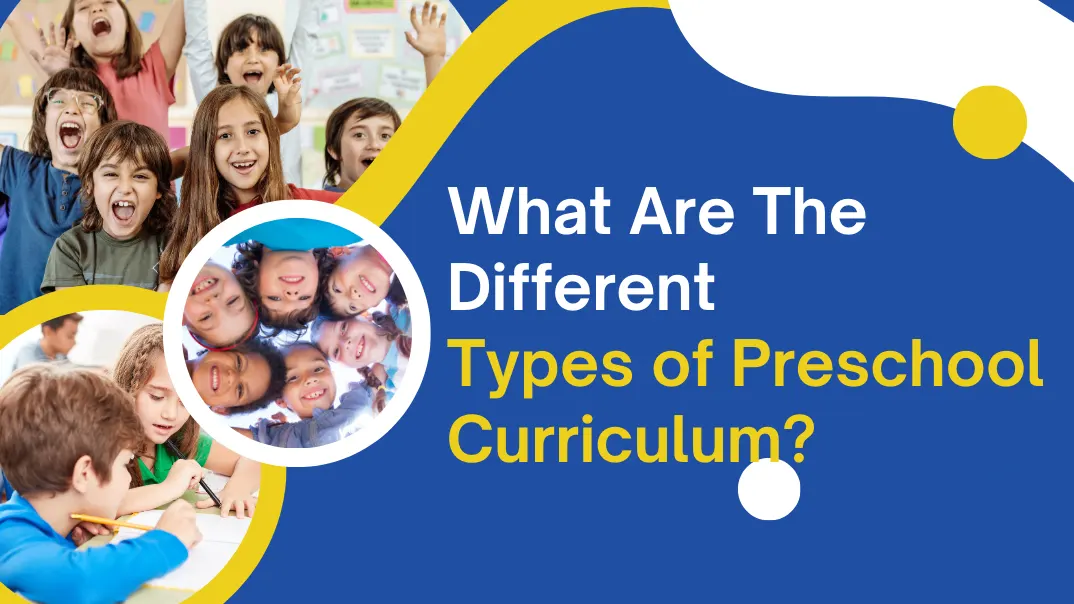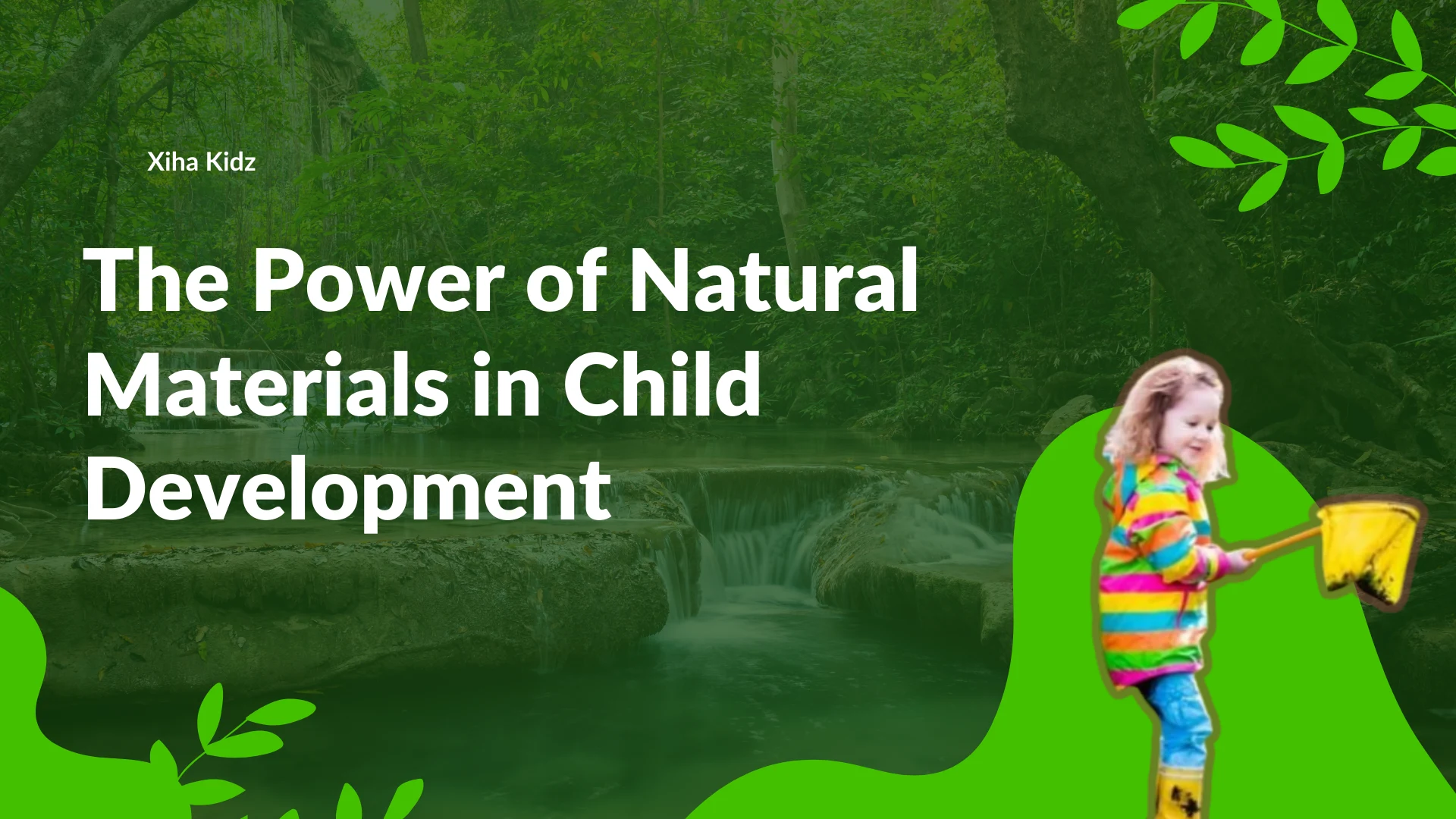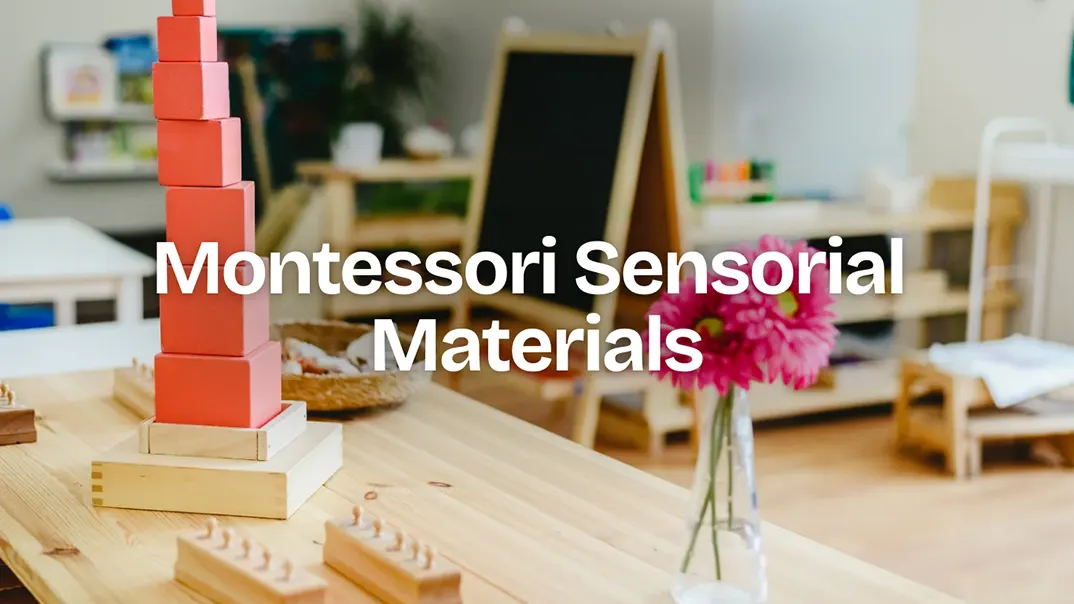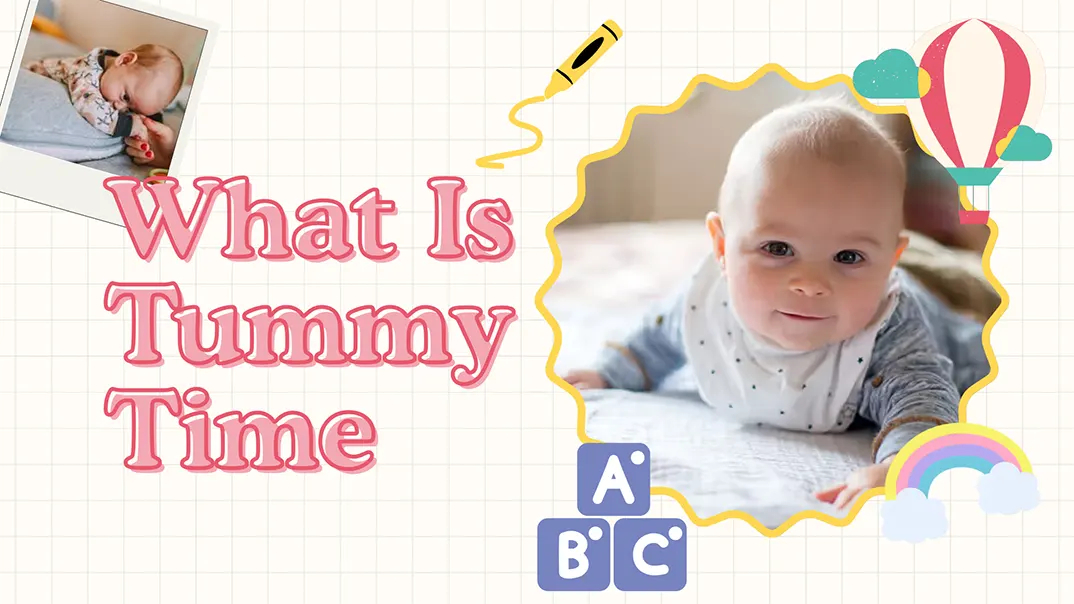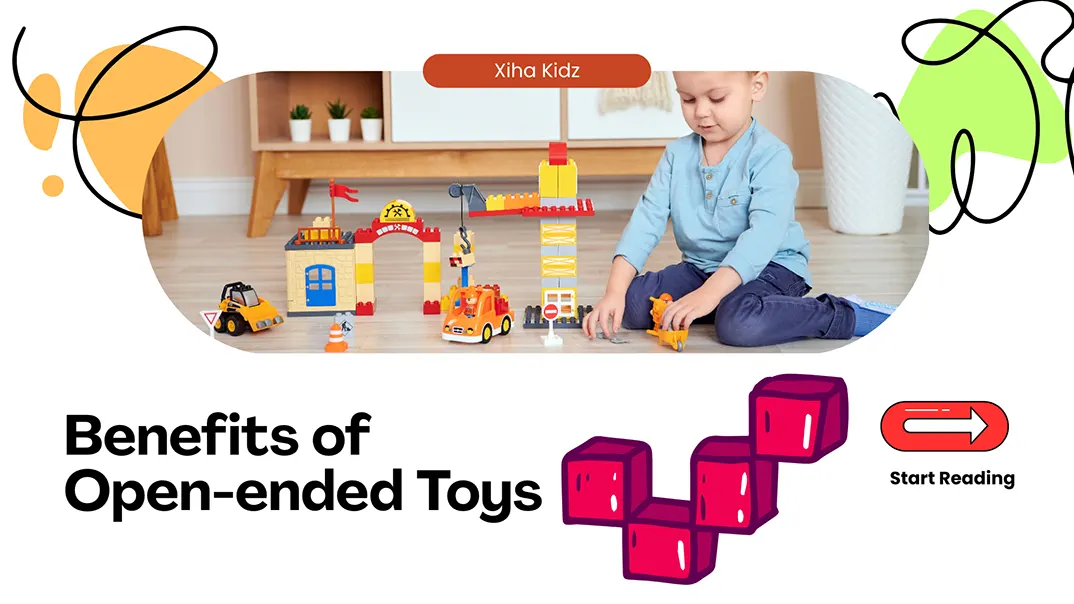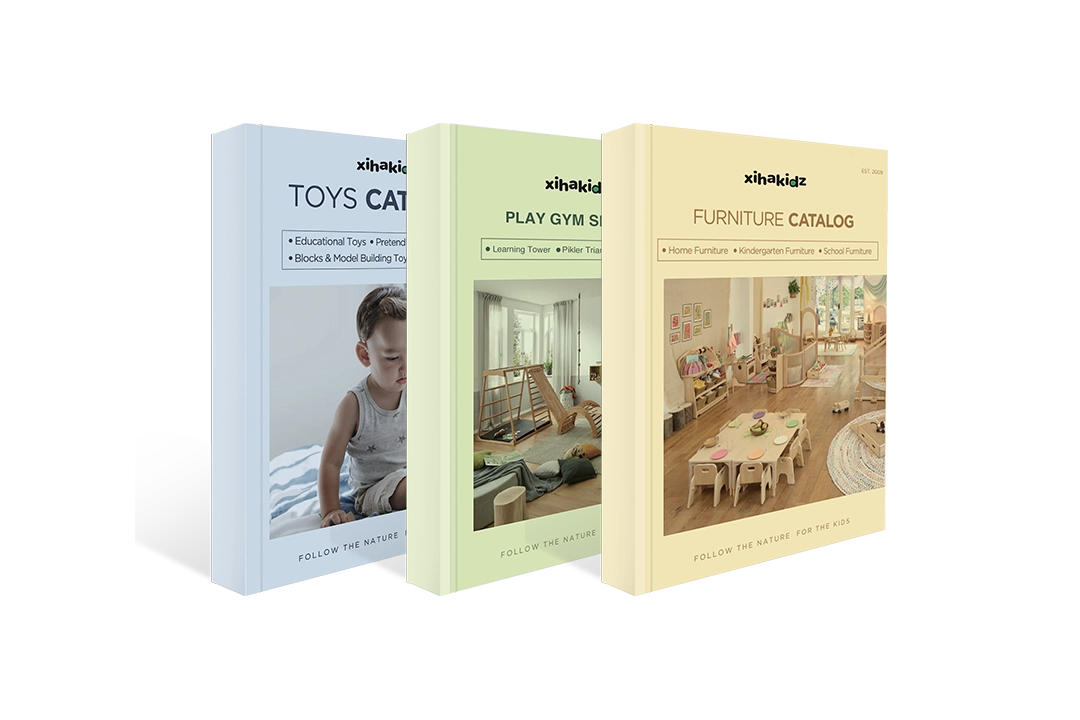“Studies reveal that nearly 90% of a child’s brain development occurs before the age of five, making the preschool years a critical foundation for future learning. With such high stakes, parents and educators often face a difficult question: which type of preschool curriculum best supports a child’s growth? From structured academic models to play-based approaches, the variety of options can feel overwhelming. This article explores the different types of preschool curriculum to help you understand their unique features and choose the most suitable path.”
What Are The Different Types of Preschool Curriculum?
When choosing a preschool curriculum, educators and parents must understand the many different models that exist. Each approach reflects different philosophies, teaching methods, and outcomes. Below are twelve major types of preschool curriculum. For each, you will find a description, its distinguishing features, and a table of advantages and disadvantages. This will help you evaluate which model may best suit a child’s learning style, family values, and readiness.
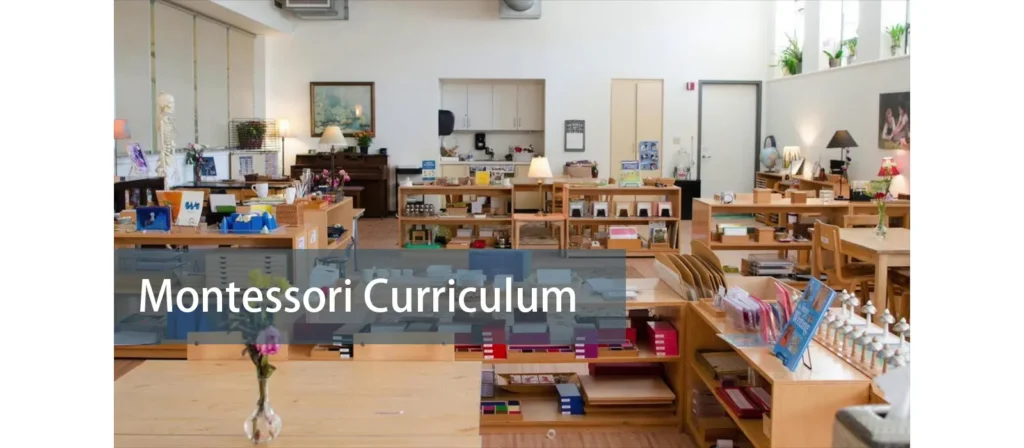
1. Montessori Curriculum
En Montessori curriculum, developed by Dra. María Montessori in the early 20th century, emphasizes child-led, self-paced, hands-on learning in a prepared environment. The teacher’s role is that of guide: observing the child, offering materials, and facilitating growth. The curriculum includes sensorial activities, practical life skills, mathematics, language, and cultural studies. It is widely used around the world, and many studies suggest Montessori students can develop strong self-regulation, attention span, and independence.
Características principales
- Mixed-age classrooms (often spanning three years) so younger children learn from older ones and older children consolidate by teaching or helping.
- Specially designed materiales didácticos that are self-correcting and sensorial (sorting, touch, visual discrimination).
- Children choose their activities freely, working for extended uninterrupted periods (often 2–3 hours).
- Emphasis on practical life routines (pouring, cleaning, care of the environment) to build fine motor skills, concentration, and order.
- Minimal use of external rewards or punishments; focus on intrinsic motivation, respect, and peaceful conflict resolution.
Pros and Cons
| Advantages | Disadvantages |
|---|---|
| Encourages independence, self-motivation, and intrinsic discipline. | Can be expensive and require teachers with specialized Montessori training. |
| Supports deep concentration, mastery of tasks, and strong fine motor development. | Less emphasis on group work or social negotiation in large groups if not well managed. |
| Offers individualized pacing; children proceed at their own developmentally appropriate speed. | Academic readiness (e.g. literacy, numeracy) might lag in more structured curricula if the child spends less time on those tasks early on. |
| Clean, orderly, well-prepared environments that reduce distractions. | Less flexibility for spontaneous group projects or large imaginative play if classroom is too rigidly structured. |
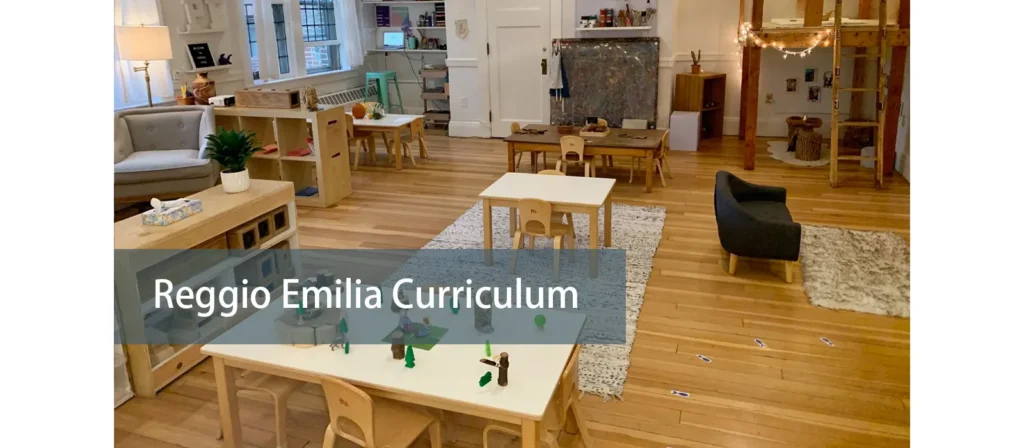
2. Reggio Emilia Curriculum
Originating in Reggio Emilia, Italy, after World War II, this approach views children as active, capable learners with rich potential. The curriculum is emergent—meaning it evolves based on children’s interests. It emphasizes collaboration, expressive arts, documentation of learning, and the classroom environment as “third teacher.” Teachers observe children closely, listening and asking questions, building projects around what children are curious about.
Características principales
- Projects develop from children’s interests rather than predetermined topics.
- Learning through expressive arts: drawing, sculpture, drama, puppetry, used not just for art’s sake but to think, to represent ideas, to plan.
- Collaboration among children, teachers, families, and the community; strong parental involvement.
- Using photos, transcriptions, and portfolios to capture the learning process and reflect.
- Learning spaces are arranged to be aesthetically pleasing, filled with natural light, materials, and open-ended resources; the physical environment is viewed as powerful in shaping learning.
Pros & Cons
| Advantages | Disadvantages |
|---|---|
| Deep engagement: children explore what truly interests them, which builds intrinsic motivation and deeper understanding. | Less predictable: parents or administrators may have difficulty anticipating exactly what will be taught or when. |
| Encourages creativity, collaboration, communication, and flexibility. | Requires high teacher skill in observing, facilitating, designing projects—not every teacher may have that training. |
| Strong ties to community and environment make learning more meaningful. | Could be less emphasis on early readiness for standard testing or more structured academic measures. |
| Children develop multiple modes of expression and thinking. | Possible inconsistency across classrooms; emergent curriculum may lead to gaps in coverage if not carefully overseen. |
| Encourages parental involvement, transparency, which builds trust. | Resource‑intensive: requires rich materials, flexible space, small class sizes. |

3. Parent Cooperative Curriculum
In a Parent Cooperative (Parent Co‑op) curriculum, parents play a direct role in the educational experience: helping in the classroom, making decisions about curriculum, supporting events, sometimes even sharing responsibilities for instruction. These programs are often community‑based, less formal, and foster strong parent‑child‑school connections. They frequently combine free play, academic preparation, social development, and shared decision making.
Features
- Strong parent involvement, either in classroom assistance or governance.
- Shared decision making among teacher(s), parents, sometimes children.
- Often flexible curriculum mixing play, socialization, and academic readiness.
- Smaller class sizes, lower cost because parent labor is part of operation.
- Emphasis on community, relationship building, reflecting family values.
- Often more flexible scheduling, less rigid structure than more formal curricula.
Pros and Cons
| Advantages | Disadvantages |
|---|---|
| Strong parent‑teacher relationship; parents have voice in what children are learning. | May place burden on parents who lack time, resources, or confidence to participate. |
| Can be more affordable or flexible in schedule or scope. | Quality and consistency may vary because of varied skills or commitment among parents. |
| Fosters community, belonging, mutual support. | Potential for conflict or slow decision‑making if many stakeholders. |
| Curriculum can be responsive to family values, cultural background. | Sometimes less access to specialist resources or professionally designed curricula. |

4. Bank Street Curriculum
Bank Street, also known as the Bank Street Developmental Interaction Approach (originally from the Bank Street College of Education in New York). Bank Street, rooted in progressive education in the United States, emphasizes learning through experience. Children learn through direct interaction with their environment, through hands-on projects, field trips, arts, social studies, stories. The curriculum focuses on emotional, social, physical, and cognitive development. The teacher acts as a guide and co-learner, using real-world experiences often in urban/community settings.
Características principales
- Emphasis on social justice, diversity, inclusion; many Bank Street programs explicitly address equity and cultural responsiveness.
- Curriculum built around thematic units linked to children’s lives and environments.
- Use of storytelling, dramatic play, art, working with materials; integrating academic content into meaningful contexts.
- A balance among child-initiated and teacher-guided experiences.
- Activities often include field experiences, community interaction, and reflective conversations.
Pros & Cons
| Advantages | Disadvantages |
|---|---|
| Holistic development: social, emotional, academic all addressed. | May be less emphasis on early academic benchmarks like reading fluency or formal math skills, which some families prioritize. |
| Integrative themes help children make connections across domains. | Requires skilled teachers; thematic planning is time‑intensive. |
| Strong focus on diversity, equity, and inclusion. | Some curricular goals may be less measurable; harder to report standardized metrics. |
| Encourages curiosity, creativity, personable learning environment. | Resource demands: materials, space, teacher training. |
| Flexible to children’s interests and responsive to cultural contexts. | Transition to more structured schooling may be rough for children used to more open‑ended, less structured day. |

5. HighScope Curriculum
HighScope is a research‑based curriculum approach developed in the 1960s, especially known for the Perry Preschool Project research. It emphasizes active participatory learning: children make choices about materials, activities, and interactions, and adult interactions to scaffold learning. Its structured daily routine and plan‑do‑review method make it both child‑centered and consistent.
HighScope aims to foster academic skills, but also executive functions (planning, self‑control), social competence, and problem solving. Teachers observe children against developmental indicators. The curriculum has well‑defined content areas: language, social studies, art, mathematics, science, physical development, etc.
Features
- Plan‑Do‑Review: children plan their work, do it, and then reflect with teachers.
- Interest areas: areas of classroom divided for different types of play/work (e.g., blocks, dramatic play, art).
- Regular daily routine: consistent schedule fosters security and self‑regulation.
- Use of developmental indicators to observe and assess growth.
- Teacher scaffolding: guided interactions, open questions, supportive feedback.
- Small groups and individual work balanced with group time.
Pros & Cons
| Advantages | Disadvantages |
|---|---|
| Improves executive function, which is linked to later success in school. | Requires rigorous teacher training and ongoing monitoring. |
| Consistent daily routine helps children feel secure and learn to self‑regulate. | More structured than purely play‑based models; may feel rigid for some children or families. |
| Balanced mix of child‑initiated and teacher‑guided learning. | Implementation fidelity is crucial; poor implementation reduces effectiveness. |
| Good evidence base: longitudinal studies show positive outcomes. | Materials and staffing need investment; not always available. |
| Strong support for social skills and group collaboration. | Less flexibility: deviations from the model or schedule can reduce efficacy. |
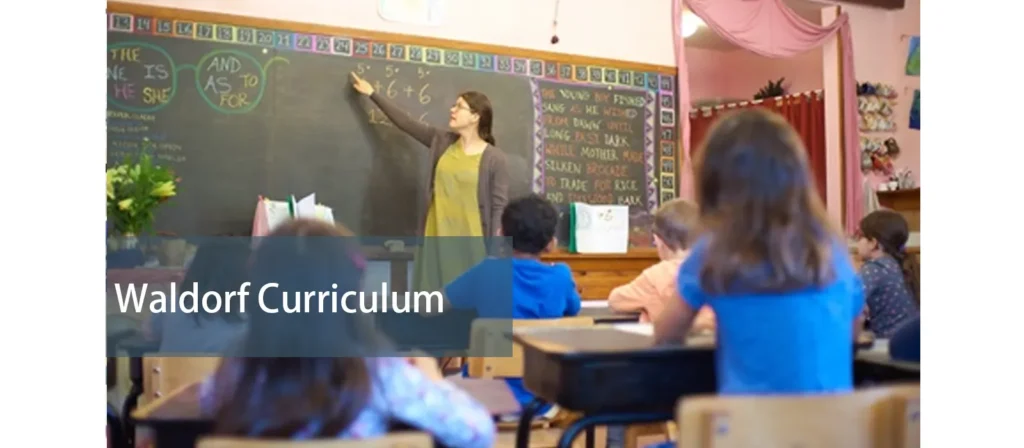
6. Waldorf Curriculum
Waldorf education (also known as Steiner education) was founded by Rudolf Steiner in the early 20th century. It emphasizes imagination, art, nature, rhythm, and holistic development (head, heart, hands). In preschool, this means storytelling, puppetry, handwork like knitting or woodworking, strong rhythm in daily and seasonal activity, limited use of technology, and connection to nature. A characteristic of Waldorf is continuity of teacher relationship over multiple years, and a slower introduction of academics such as reading and writing.
Características principales
- Emphasis on imaginative play, artistic activities, music, nature, and storytelling.
- Daily and seasonal rhythms: repeated patterns in daily schedule (morning circle, free play, artistic time), and throughout the year (festivals, seasonal crafts).
- Late introduction of formal academics: reading, writing, and arithmetic introduced later compared to other models; focus first on imagination, movement, art, and sensory experiences.
- Strong teacher‑child relationship: teachers usually stay with the same class over multiple years (looping).
- Use of natural materials: wood, wool, natural fabrics; warm, homelike classroom environments.
Pros & Cons
| Advantages | Disadvantages |
|---|---|
| Encourages imaginative thinking, creativity, emotional intelligence. | Some parents worry about delayed formal academics (reading, math) if their child will enter traditional school early. |
| Deep connection to nature and organic materials enhance sensory experience. | Less exposure to technology may put children behind in digital literacy in some contexts. |
| Emphasis on rhythm and routine helps children feel secure. | Implementation can vary widely depending on teacher; quality compromised without fidelity. |
| Builds strong artistic, aesthetic sensibilities. | If child transitions to a more academic environment, adjustment may be hard. |
| Strong interpersonal relationships, loyalty between child and teacher. | Materials and teacher training have costs; natural materials may be more expensive. |

7. Play‑Based Curriculum
A play-based curriculum prioritizes play as the primary mode of learning for young children. In this model, most learning occurs through guided, unstructured play. This includes imaginative, physical, social, and exploratory play, rather than direct instruction. Teachers observe, guide, and sometimes introduce topics, but learning is largely driven by the children’s curiosity.
Características principales
- Child‑initiated play, with teachers facilitating rather than directing.
- Open‑ended materials (blocks, natural materials, dress‑up, art supplies) that can be used in many ways.
- Emphasis on social interaction, juego dramático.
- Flexible schedule, allowing longer blocks of play and transitions.
- Learning through play includes cognitive, social, emotional, physical development.
Pros and Cons
| Advantages | Disadvantages |
|---|---|
| Fosters creativity, social skills, cooperation, problem solving. | Less predictability; may lack deliberate focus on literacy and numeracy unless teacher intervenes. |
| Learners often more engaged and self‑motivated. | Assessment of progress can be more subjective and less standardized. |
| Supports emotional growth, conflict resolution, imagination. | Some parents or schools may expect more structured achievement early and may feel uneasy. |
| Allows learning across domains in a natural way (art, science, social). | May require more teacher skill to guide appropriately without taking over. |

8. Tools of the Mind Curriculum
Tools of the Mind is a curriculum developed based on Vygotskian theories of social constructivism, self‑regulation, and executive function. It focuses on developing self‑control, planning, working memory, and social collaboration in young children. Developed by educators and psychologists, it is evidence‑based and has been studied in numerous settings.
Características principales
- Structured dramatic play with scaffolding: children use “play plans” before engaging in pretend play.
- Emphasis on self‑regulation skills: private speech, socially mediated regulation.
- Integration of literacy, writing, math through interactive and play contexts.
- Focus on peer interaction and cooperation.
- Classroom curriculum sequences that build progressively, with supports gradually fading.
Pros and Cons
| Advantages | Disadvantages |
|---|---|
| Improves executive functions, which research links to academic and life success. | More structured than some play‑based models; may be demanding for some children. |
| Enhances social behaviors: taking turns, cooperative play, planning. | Requires intensive teacher training; fidelity of implementation is critical. |
| Supports transition to more structured learning settings (school readiness). | Less natural or free play may reduce imaginative exploration for some children. |
| Teachers have clear guidelines and materials to support learning. | Might feel constrained or less flexible in following individual child’s spontaneous interests. |
| Frequent collaboration and pair work build social skills. | Assessments and scaffolding are labor‑intensive; administrative burden. |

9. Creative Curriculum
The Creative Curriculum is widely used in preschool settings, developed by Teaching Strategies. It combines exploration, discovery, and teacher‑guided instruction. It is designed to support all areas of child development, learning standards, and práctica apropiada para el desarrollo. It includes intentional teaching, learning through play, and strong focus on social‑emotional development.
Características principales
- Defined learning objectives across domains; clear scope and sequence.
- Weekly or daily lesson plans provided; teacher‑guided instruction balanced with child choice.
- Assessment tools based on observation, portfolios, portfolios.
- Emphasis on social studies, science, literacy, math within thematic units.
- Resources and materials are provided; classroom setup conducive to small groups, learning centers.
Pros and Cons
| Advantages | Disadvantages |
|---|---|
| Provides both structure and flexibility; useful for programs needing guidance. | May feel less individualized or responsive to children’s emergent interests than emergent curricula. |
| Helps ensure consistency in domains; helps teachers plan around measurable goals. | Risk of teachers focusing on “covering” objectives rather than depth or child‑led curiosity. |
| Good preparation for academic expectations (reading readiness, math) in kindergarten. | May underemphasize unstructured imaginative play or arts in some versions. |
| Assessment tools help families understand progress. | Materials and training can be costly; implementing well‑requires ongoing professional development. |
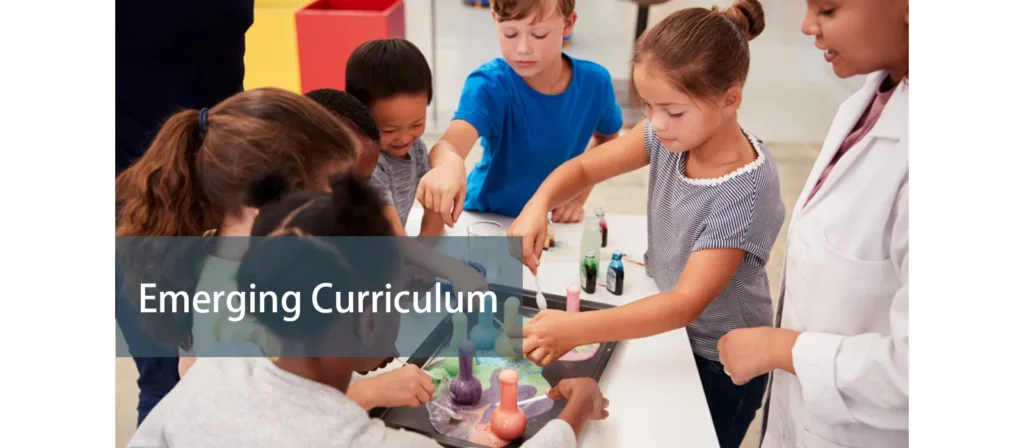
10. Emerging Curriculum
Emerging Curriculum refers to curricula that are shaped by children’s interests, questions, and observations; projects often emerge as children explore something that catches their attention. Rather than being planned with fixed topics, the themes, questions, and directions of learning arise from what children show curiosity about. The teacher’s role becomes observing, documenting, and facilitating along children’s lines of inquiry.
Características principales
- Projects and themes developed from children’s expressed interests.
- Flexible scheduling and learning environments to adapt to emerging topics.
- Strong documentation to track where children are, what they are asking, what skills need support.
- Blend of play, art, investigation, questioning, group work.
- Often located in Reggio Emilia influenced environments, democratic schools, or progressive preschools.
Pros and Cons
| Advantages | Disadvantages |
|---|---|
| Highly motivating for children; learners pursue what they care about. | Harder to ensure coverage of certain academic or foundational skills if not supplemented. |
| Deep engagement; often leads to rich learning and retention. | Requires flexible resources; teachers must be skilled in observation, adapting plans. |
| Encourages curiosity, inquiry, language development, collaboration. | Potentially inconsistent progression; external expectations (e.g., standardized tests) may not align. |
| Reinforces ownership of learning and self‑confidence. | Parents may find unpredictability unsettling; documentation and planning time is large. |

11. Faith‑Based Curriculum
Faith‑based preschools add spiritual, moral, or religious teachings alongside academic and developmental goals. These schools integrate stories, values, prayer or worship elements, religious holiday observances, moral instruction. The curriculum often combines a general preschool pedagogy (play‑based, academic, or blended) with a religious worldview that frames behavior, relationships, community service, ethics.
Features
- Regular inclusion of religious stories, scripture, prayers, songs.
- Emphasis on moral values such as honesty, kindness, compassion, service.
- Integration of faith traditions in festivals, holidays, daily rituals.
- Academic and play components often similar to other curricula, but adapted to reflect faith values.
- Often small class sizes, community involvement.
- May follow religious school calendar.
- Staff often share or respect faith traditions; curriculum may expect alignment with those values.
Pros & Cons
| Advantages | Disadvantages |
|---|---|
| Clear moral and ethical framework that many families value. | May limit diversity of perspectives if not carefully designed. |
| Reinforces values, community identity, spiritual development. | Religious instruction may conflict with scientific or secular views in some topics. |
| Often strong community, family involvement. | Some families prefer separation of religious instruction and academic content. |
| Children learn moral vocabulary and reflections early. | Could be less inclusive for children of other faiths or no faith, depending on environment. |
| Teachers and instruction align with values of the community. | Potential risk of dogmatism if curriculum is not open to questioning or critical thinking. |
12 Forest School
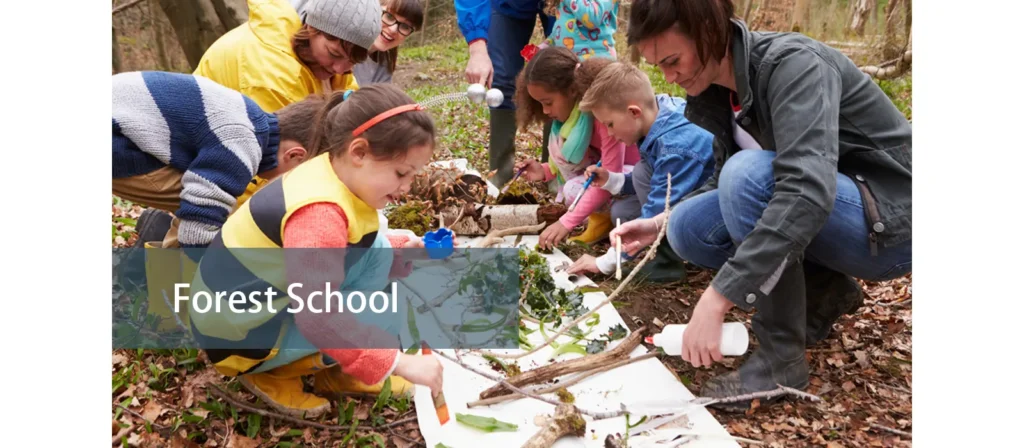
Forest School is a model where children spend significant time outdoors in natural environments. Learning is deeply connected to nature, exploration, physical activity, risk assessment, and holistic development. It has roots in Scandinavian traditions and has grown globally.
Features
- Majority of time spent outdoors, in natural settings.
- Learning is experiential: nature studies, risk, problem solving, free exploration.
- Emphasis on ecology, environment, sustainability.
- Teachers trained in outdoor safety, ecological knowledge.
- Physical risk is allowed (within safe limits) to build confidence.
- Materials are natural or drawn from the environment.
- Long‑term project work tied to seasons, place, cycles of nature.
Pros & Cons
| Advantages | Disadvantages |
|---|---|
| Promotes physical health, gross motor skills, sensory awareness. | Weather or location constraints may limit feasibility in some regions. |
| Strengthens connection to nature, ecological awareness, environmental stewardship. | Logistics, safety, funding issues more complex (transport, outdoor gear, risk management). |
| Boosts resilience, creativity, risk assessment, independence. | Some children may feel uncomfortable outdoors (insects, mud, cold). |
| Enhances social cooperation in non‑structured settings. | Less controlled learning environment, harder to structure certain academic content outdoors. |
| Encourages problem solving, adaptability. | Resources (outdoor space, trained staff) are not universally available. |
Transforme su aula con soluciones de mobiliario a medida
The Benefits of Carefully Choosing a Preschool Curriculum
Choosing a preschool curriculum is not merely a pedagogical question—it has long‑term consequences for children, families, and your kindergarten’s success. Below are extended, research‑informed reasons why careful choice matters. I draw on educational theory, studies, and practical observations to show what each family should consider.
- Better Fit for Your Child’s Personality: Matching the curriculum to your child’s temperament supports confidence, engagement, and emotional security.
- Stronger Academic and Developmental Growth: Research-backed curricula enhance early literacy, math skills, and cognitive development.
- Improved Social and Emotional Skills: Programs that emphasize cooperation and empathy help children manage emotions and build friendships.
- Alignment with Family Values and Culture: Choosing a curriculum consistent with your family’s beliefs creates continuity between home and school.
- Kindergarten Readiness: Structured, well-designed programs prepare children for the routines, expectations, and academics of elementary school.
- Greater Parent and Child Satisfaction: When children thrive and parents see progress, satisfaction and trust in the program naturally increase.
- Balanced Development Across All Domains: Holistic programs nurture creativity, movement, thinking, and emotional intelligence together.
- Better Implementation and Classroom Quality: Thoughtful curriculum choices often lead to better-trained teachers and richer classroom environments.
- Maximizes Educational Investment: Choosing a quality curriculum ensures your time, money, and energy produce long-term benefits.
Preguntas frecuentes
- What’s the best preschool curriculum for my child?
The best curriculum depends on your child’s learning style, interests, and developmental needs. Visit schools and observe classes before choosing. - How important is accreditation?
Accreditation ensures that the curriculum meets educational standards and that teachers are qualified. - Can I combine multiple curriculum types at home?
Absolutely. Many parents blend elements from different curriculums to enrich learning at home. - Do all preschool curriculums prepare kids for kindergarten?
Most curriculums aim to build foundational skills for kindergarten, though the methods and areas of focus may differ.
Conclusión
Understanding the types of preschool curriculum is a critical first step in shaping your child’s educational journey. From hands-on and artistic to academic and structured, there’s a preschool model designed to match every child’s temperament and learning style. So take your time, explore your options, and trust your instincts—your little learner’s future is bright!

